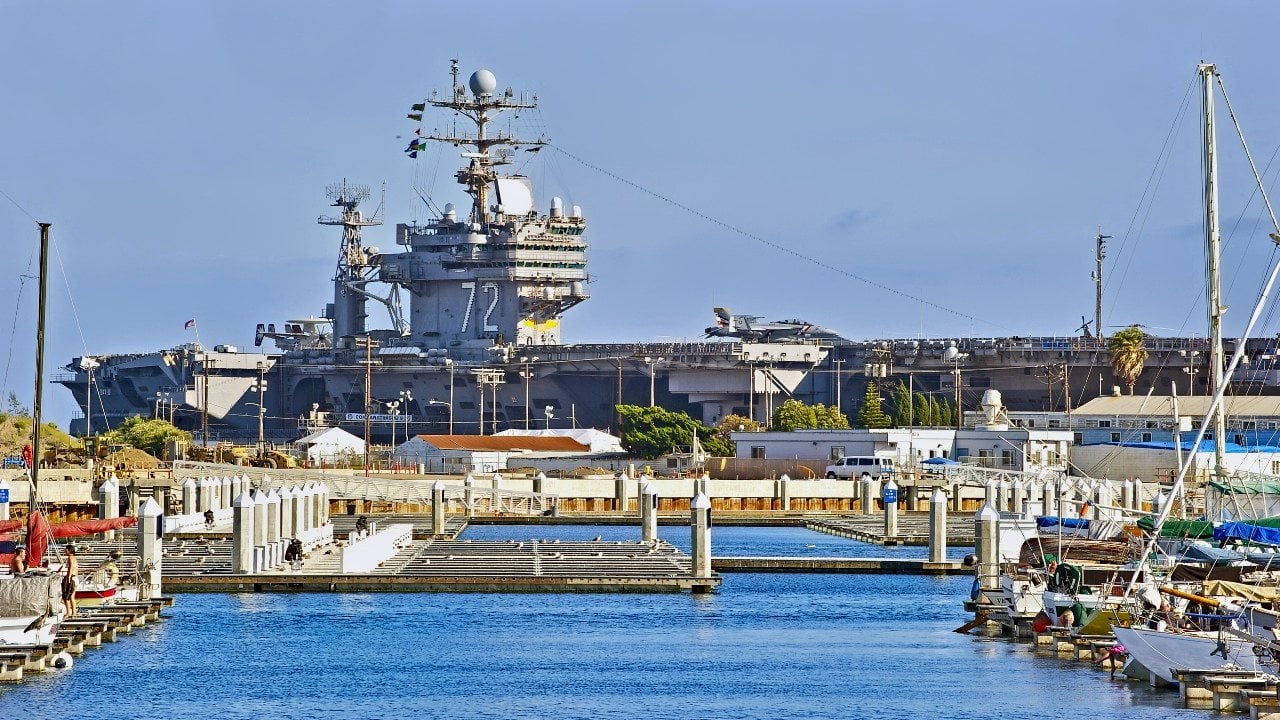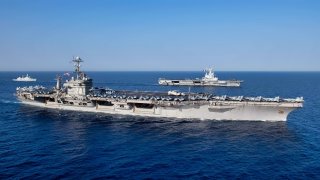5 Years of Repairs: Nimitz-Class Aircraft Carrier Is Getting a Massive Overhaul
The ongoing delays in the overhaul of the USS John C. Stennis, a Nimitz-class aircraft carrier, highlight a broader issue of declining U.S. shipyard capabilities, which are causing strategic gaps in national defense.
Summary and Key Points: The ongoing delays in the overhaul of the USS John C. Stennis, a Nimitz-class aircraft carrier, highlight a broader issue of declining U.S. shipyard capabilities, which are causing strategic gaps in national defense.
-Originally scheduled for a three-year Refueling and Complex Overhaul (RCOH) starting in 2021, the Stennis is now expected to be delayed until at least 2026.
-This situation is symptomatic of wider industrial challenges facing U.S. shipyards, affecting not only carriers but also submarines and other warships.
-Meanwhile, China continues to rapidly expand its naval fleet, outpacing the U.S. in shipbuilding. Urgent action is needed to address these industrial shortfalls to maintain America's maritime power.
Aircraft Carrier USS John C. Stennis Delays Highlight U.S. Shipyard Failures
In the second season of HBO’s The Wire, the dock foreman, Frank Sobotka, laments that we “used to build ****” in America and nowadays we just have our hands in “the other guy’s pocket.”
That has never seemed truer today – especially as news hits that the Nimitz-class carrier USS John C. Stennis won’t be leaving port until October 2026 at earliest. “Industrial challenges” is the euphemistic cause cited by the U.S. Navy.
Industrial Failures Abound
Those industrial challenges are leaving real strategic gaps in national defense. In 2021, USS John C. Stennis was sent to the shipyard for a routine Refueling and Complex Overhaul (RCOH) mission. It was supposed to take three years. Yet it will probably be delayed even past 2026.
As my colleague Harrison Kass assessed, “Since 2001, the U.S. Navy has conducted seven carrier overhauls. The shortest overhaul was USS Nimitz, at 1129 days. Four overhauls took between 1,338 and 1,506 days – USS Dwight D. Eisenhower, USS Carl Vinson, USS Theodore Roosevelt, and USS Abraham Lincoln.”
The most recent carrier to get an RCOH overhaul, USS George Washington, took an astonishing 2,120 days. Without adequate barracks for the extra personnel, sailors were housed in off-base housing that, in many cases, was impractical as well as inappropriate.
To avoid these pitfalls, the Navy has sourced extra funding to pay for adequate and convenient off-base housing for the sailors of John C. Stennis, who will likely be unable to return to their ship anytime soon. This means the Pentagon is anticipating even more massive delays.
This has become the norm for America’s shipyards. In fact, it is not only the vaunted carrier force that has suffered from America’s declining shipyard capabilities.
Multiple submarine repairs have been delayed due to the inefficiency and ineffectiveness of the Navy’s shipyards. USS Boise was sent over to a private shipyard after the Navy shipyard managing its overhaul was simply unable to fulfill its obligations.
The longer the delays at these shipyards, the longer warships take up limited space and move limited human capital away from other projects, like building new warships for the Navy or updating existing ships.
The Aircraft Carrier is Not the Best Investment
The U.S. Navy has over-invested in its carrier capability. These floating cities are modern marvels, yes, but they are costly to build and expensive to maintain. With America’s shipyard shortfall, building more of these systems when those yards cannot even maintain the existing fleet reliably is a mistake.
America’s potential enemies have also adapted to the threat that U.S. carriers pose. My regular readers know my concerns over the growing threat that anti-access/area-denial (A2/AD) measures pose to America’s elephantine carrier force. At best, these systems can effectively deny U.S. carriers access to contested regions. At worst, they can sink those carriers at the start of any engagement.
Submarines will be the key platform against A2/AD-armed enemies, yet there are too few of them. Those that are in service need to be overhauled. When they are overhauled, but shipyards cannot repair them on time, not only are these systems delayed from being redeployed, but other warships that need routine maintenance are delayed as well. It creates a cascading failure across the system. Everybody feels the impact.
China Building Warships Like Sausages
This, at a time when China’s shipyards are churning out warships of varying sizes and capabilities like sausages. American defense experts love to respond to this fact by making the old quality over quantity argument.

But even that falls short, when considering the decline of U.S. shipyards and all the serious delays this has caused.
And let us not forget also the old Communist dictum that “quantity has a quality all of its own.”
America is a maritime power. But that capability is waning, largely due to failed industrial policies (or the lack of any industrial policy at all).
John C. Stennis is just the latest victim of cascading industrial failures. Meanwhile, American foes like China are outproducing the U.S. and preparing to use their new navy to fundamentally reorder Asia against the United States.
Congress must address this shipyard shortfall before time runs out.
Author Experience and Expertise: Brandon J. Weichert
Brandon J. Weichert, a National Interest national security analyst, is a former Congressional staffer and geopolitical analyst who is a contributor at The Washington Times, the Asia Times, and The-Pipeline. He is the author of Winning Space: How America Remains a Superpower, Biohacked: China’s Race to Control Life, and The Shadow War: Iran’s Quest for Supremacy. His next book, A Disaster of Our Own Making: How the West Lost Ukraine, is due October 22 from Encounter Books. Weichert can be followed via Twitter @WeTheBrandon.
All images are Creative Commons or Shutterstock.
From the Vault
Russia Freaked Out: Why the U.S. Navy 'Unretired' the Iowa-Class Battleships
Battleship vs. Battlecruiser: Iowa-Class vs. Russia's Kirov-Class (Who Wins?)


